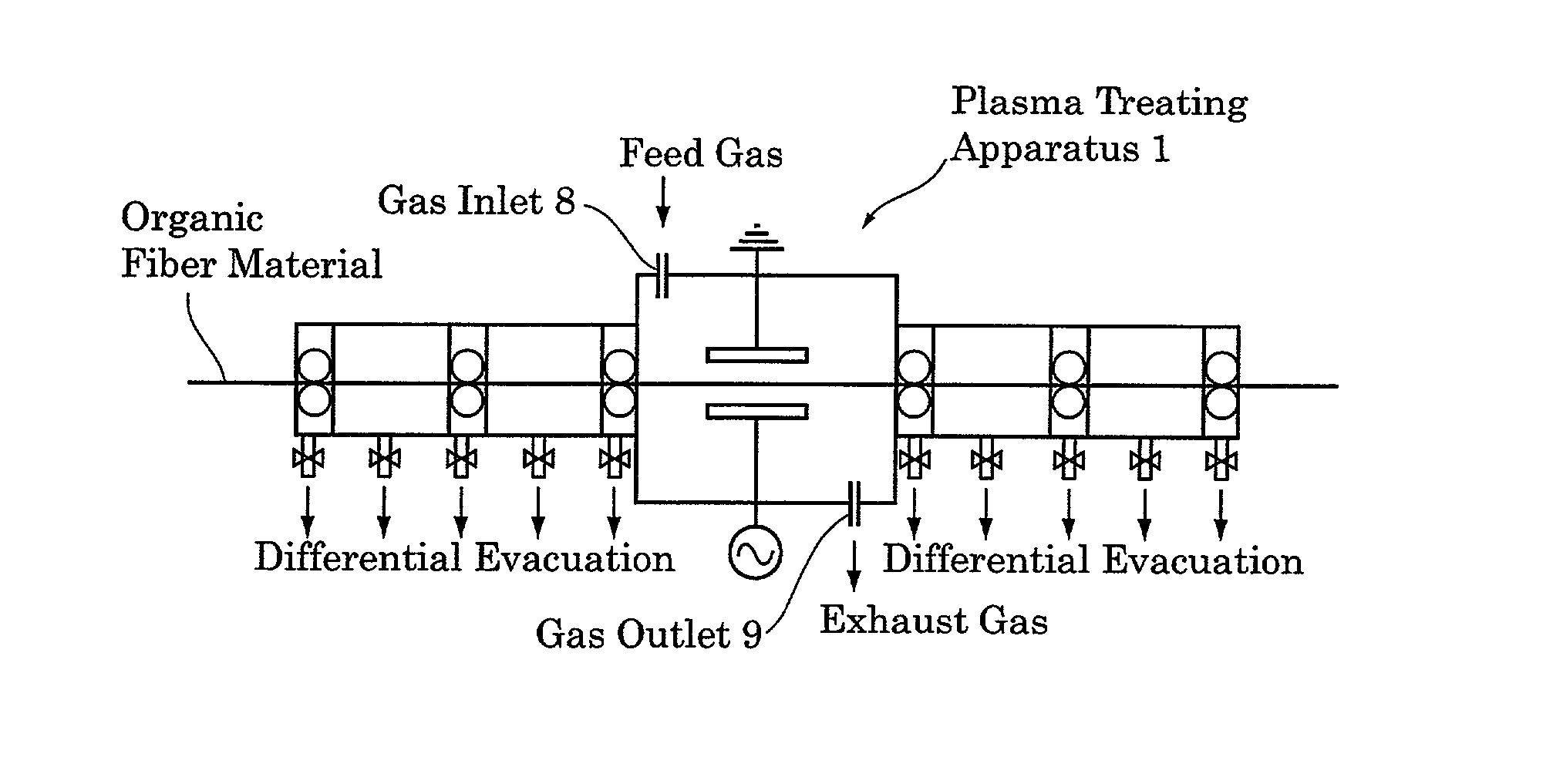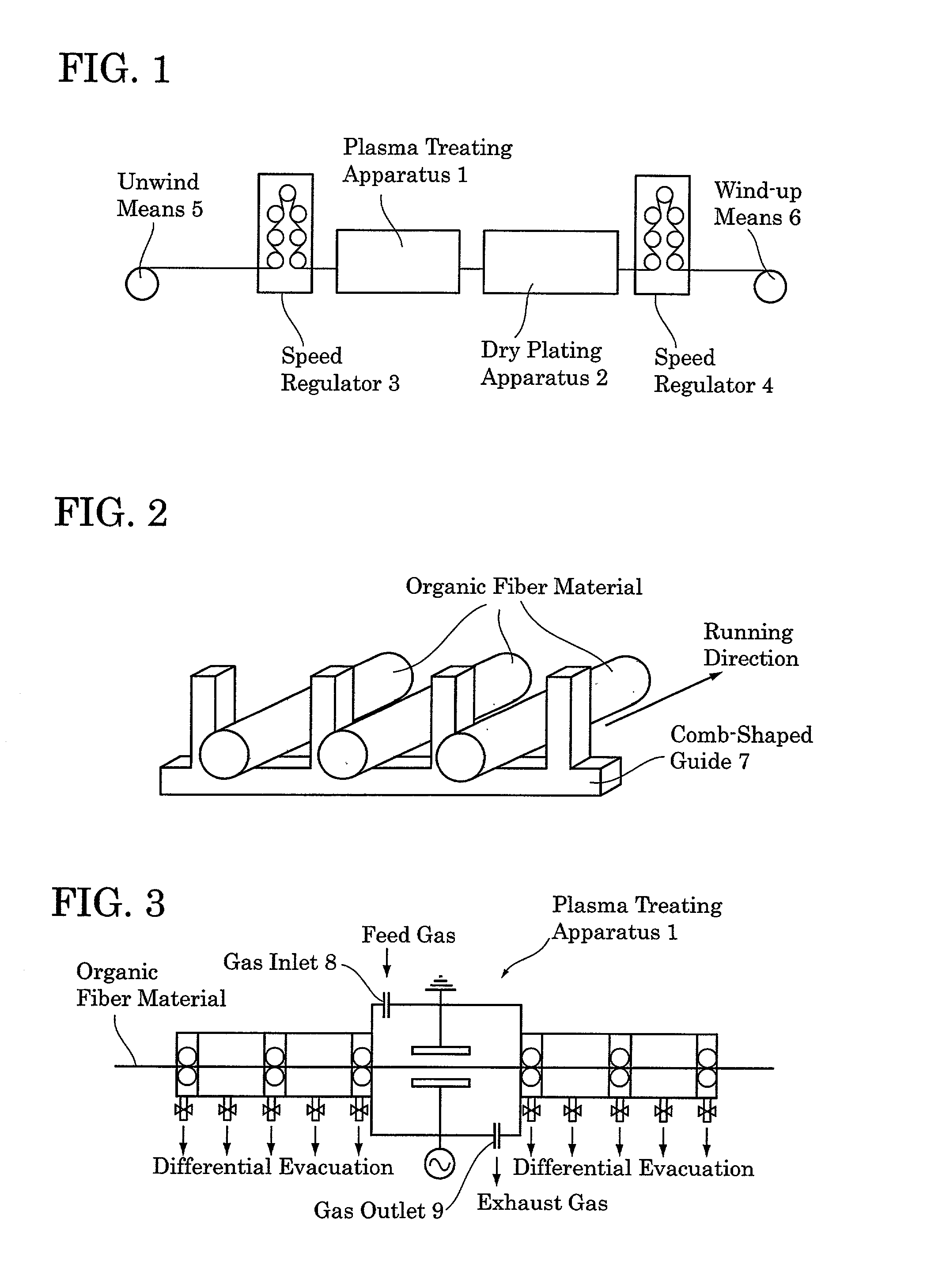Rubber-reinforcing fiber, process for producing the same, and rubber product and pneumatic tire each made with the same
a technology of reinforcing fiber and rubber, which is applied in the direction of tyre parts, physical treatment, textiles and paper, etc., can solve the problems of low and insufficient adhesion of twisted cords (multifilament cords) to rubber, inability to meet geometric fiber structures suitable for achieving sufficient adhesive strength, and inability to achieve sufficient fatigue resistance. , to achieve the effect of improving the fatigue resistan
- Summary
- Abstract
- Description
- Claims
- Application Information
AI Technical Summary
Benefits of technology
Problems solved by technology
Method used
Image
Examples
preparation example 2
[0236] Poly(Ethylene Terephthalate) Multifilament F-2
[0237] A poly(ethylene terephthalate) multimonofilament was prepared by twisting the poly(ethylene terephthalate) monofilaments of Preparation Example 1 at 25 turns / 10 cm by a twisting machine.
preparation example 3
[0238] Poly(Vinyl Alcohol) Monofilament F-8
[0239] A 40% poly(vinyl alcohol) (PVA) solution in dimethyl sulfoxide (DMSO) was prepared by dissolving PVA (vinyl alcohol unit: 81 mol %, vinyl acetate unit: 19 mol %, polymerization degree: 600, saponification degree: 80 mol %) in DMSO under stirring at 90.degree. C. for 12 hours in a reduced nitrogen atmosphere of 100 Torr or lower. The solution was extruded from an extruder kept at 90.degree. C. through a nozzle of 0.55 mm diameter and drawn in an acetone / DMSO mixture (95 / 5 by weight) kept at 2.degree. C. By removing the remaining DMSO by extraction into hot acetone and drying at 80.degree. C. by a hot-air drier, a PVA monofilament having a single fiber diameter of 120 .mu.m and the melting point of 191.degree. C. was obtained.
preparation example 4
[0240] Acrylic Monofilament F-9
[0241] A 9 wt % polymer solution was prepared by dissolving a polymer consisting of 95 mol % acrylonitrile unit and 5 mol % methyl acrylate unit into a 60 wt % dense aqueous solution of zinc chloride. The solution was pressed into a 25 wt % aqueous solution of zinc chloride through a nozzle having 12,000 holes of 0.06 mm diameter. The strands were drawn 2.5 times during the washing with water for removing the solvent, dried, and re-drawn 5 times in a saturated steam at 105.degree. C., thereby obtaining acrylic multifilament having a single fiber diameter of 10 .mu.m. The acrylic monofilament was obtained by drawing a desired amount from the multifilament.
PUM
| Property | Measurement | Unit |
|---|---|---|
| Length | aaaaa | aaaaa |
| Length | aaaaa | aaaaa |
| Length | aaaaa | aaaaa |
Abstract
Description
Claims
Application Information
 Login to View More
Login to View More - R&D
- Intellectual Property
- Life Sciences
- Materials
- Tech Scout
- Unparalleled Data Quality
- Higher Quality Content
- 60% Fewer Hallucinations
Browse by: Latest US Patents, China's latest patents, Technical Efficacy Thesaurus, Application Domain, Technology Topic, Popular Technical Reports.
© 2025 PatSnap. All rights reserved.Legal|Privacy policy|Modern Slavery Act Transparency Statement|Sitemap|About US| Contact US: help@patsnap.com



